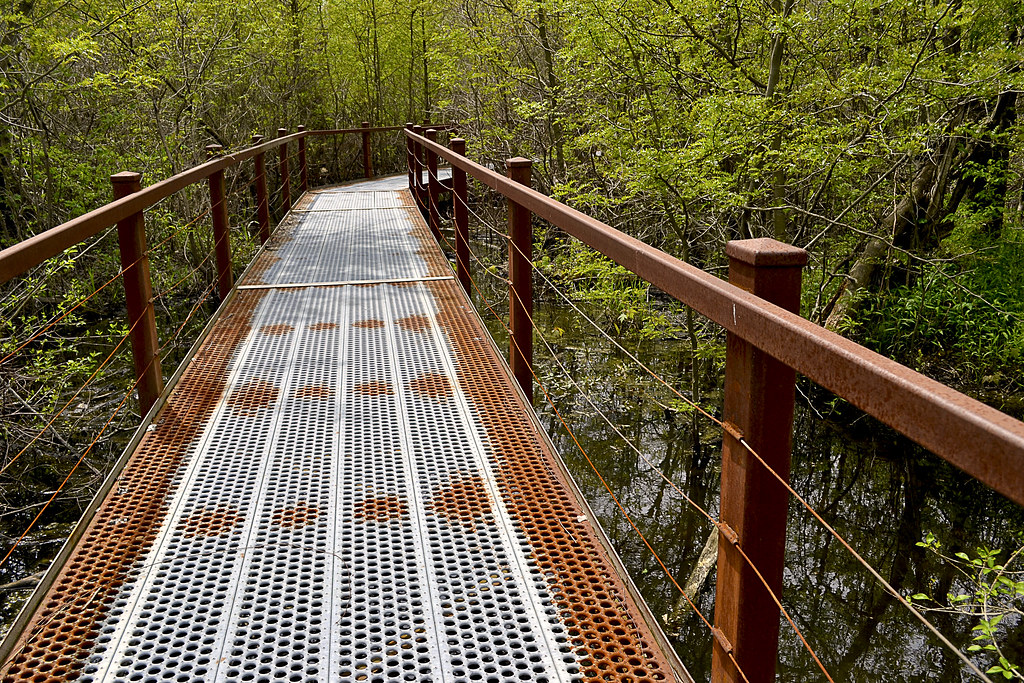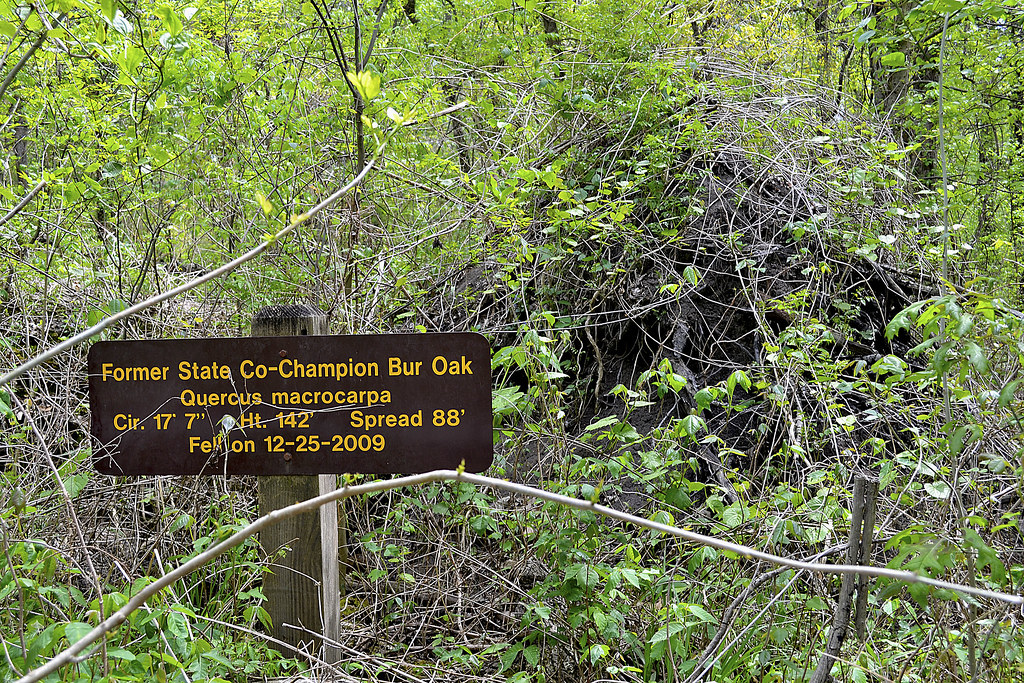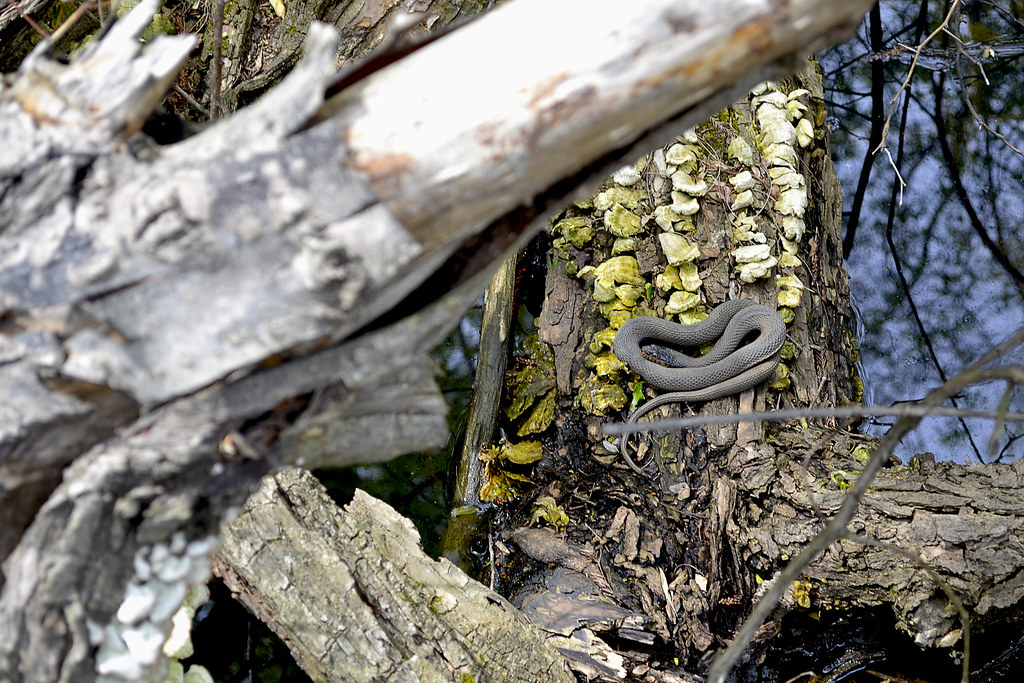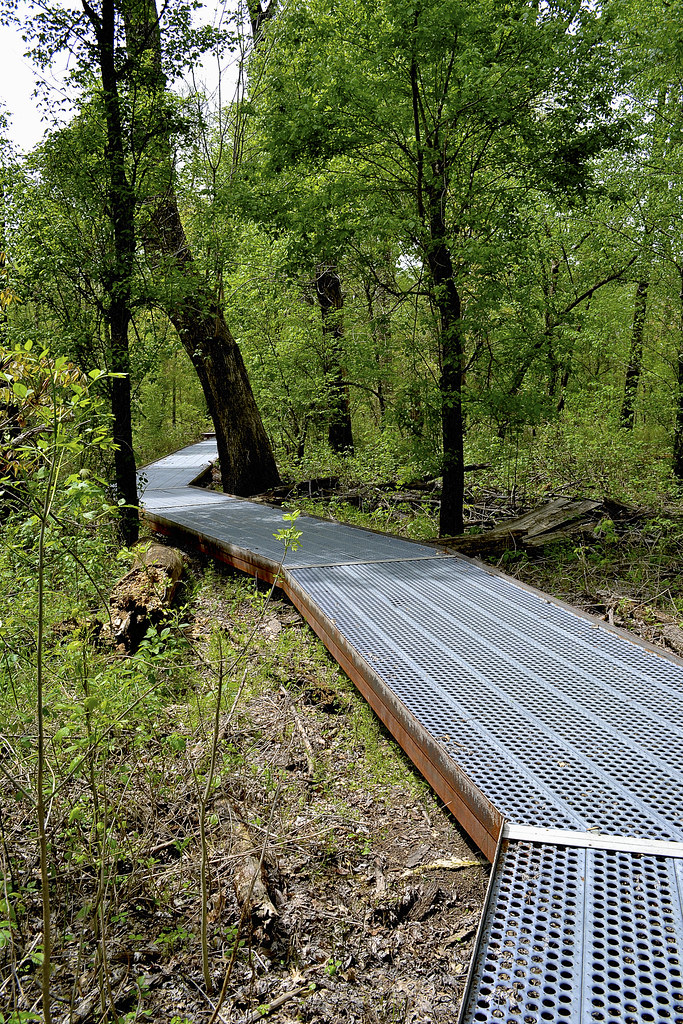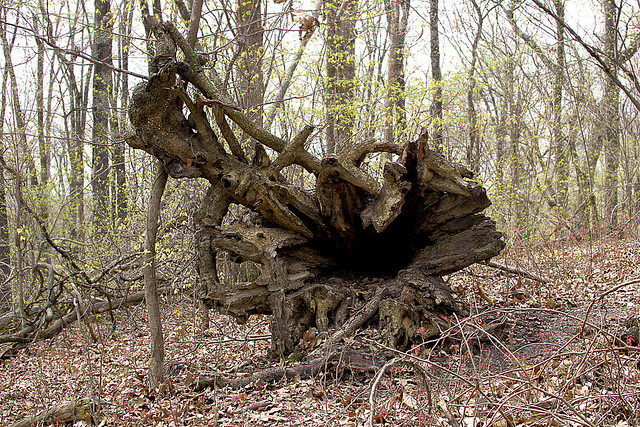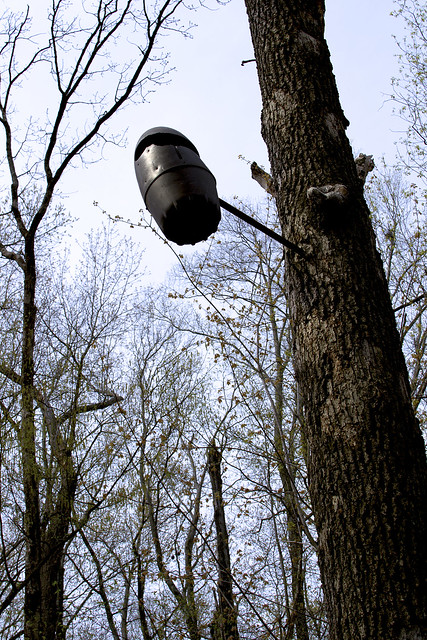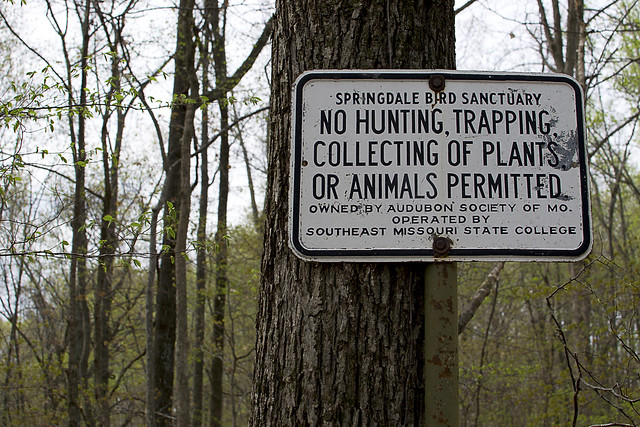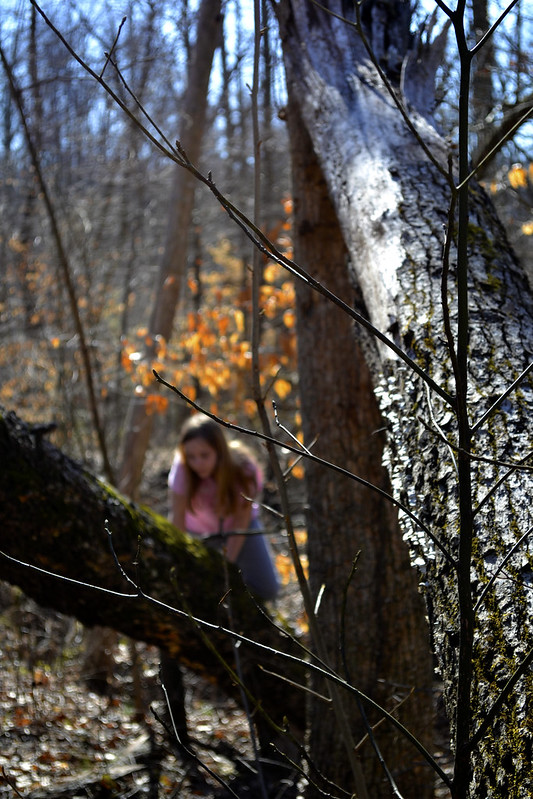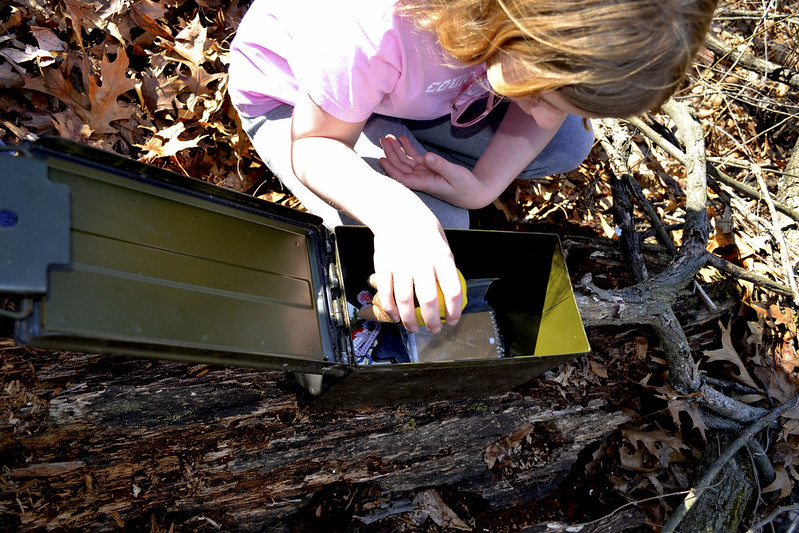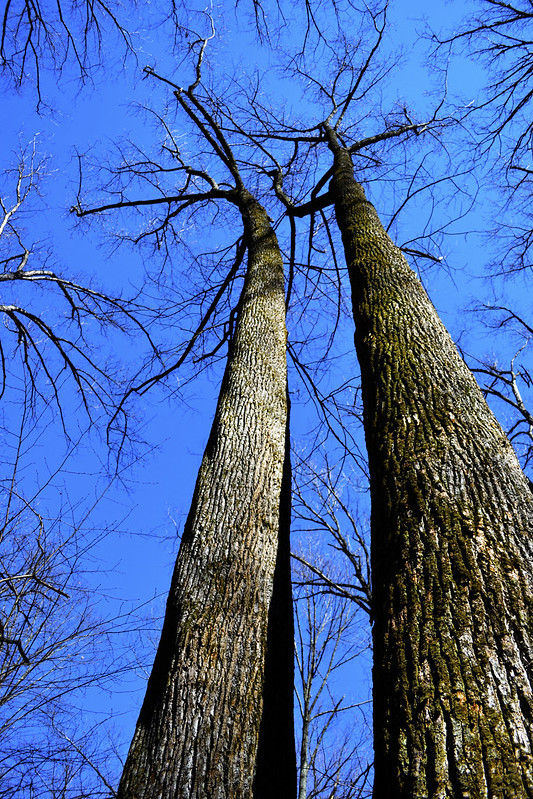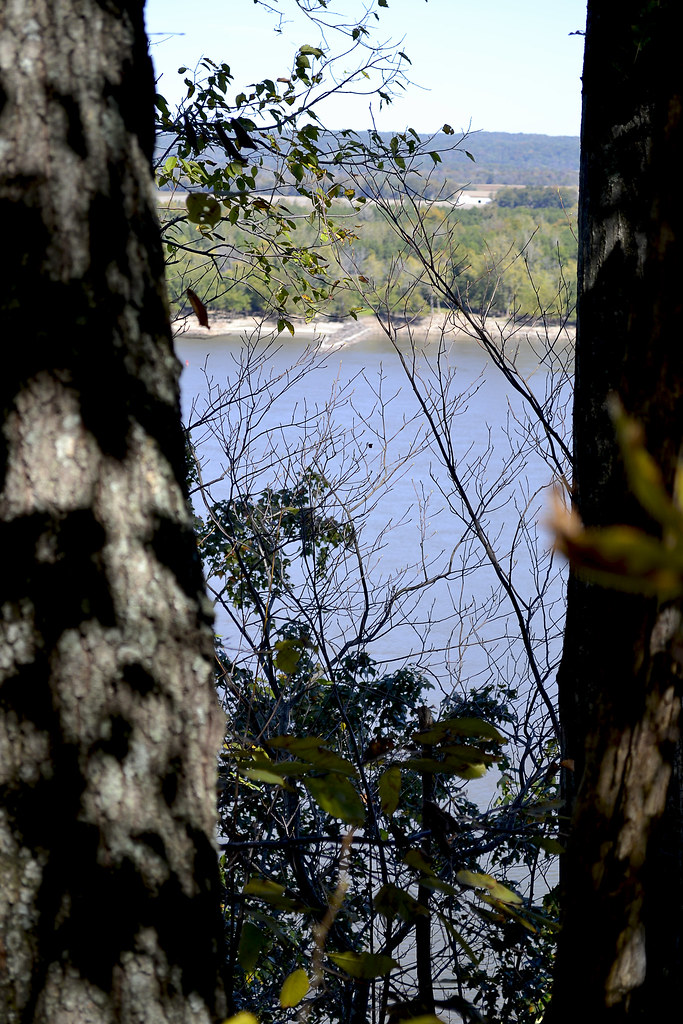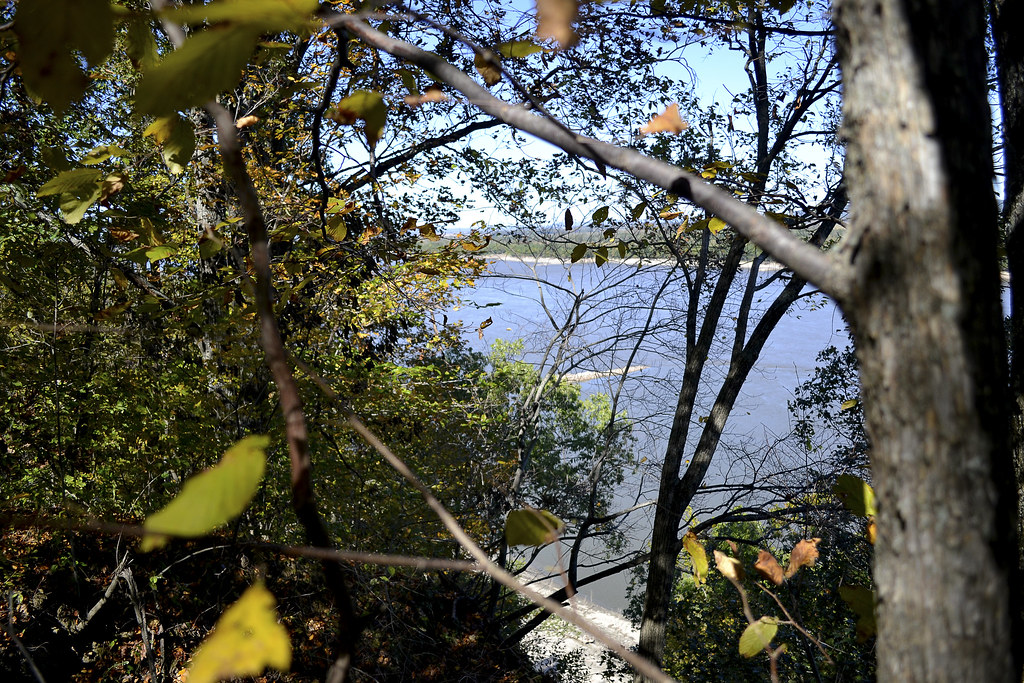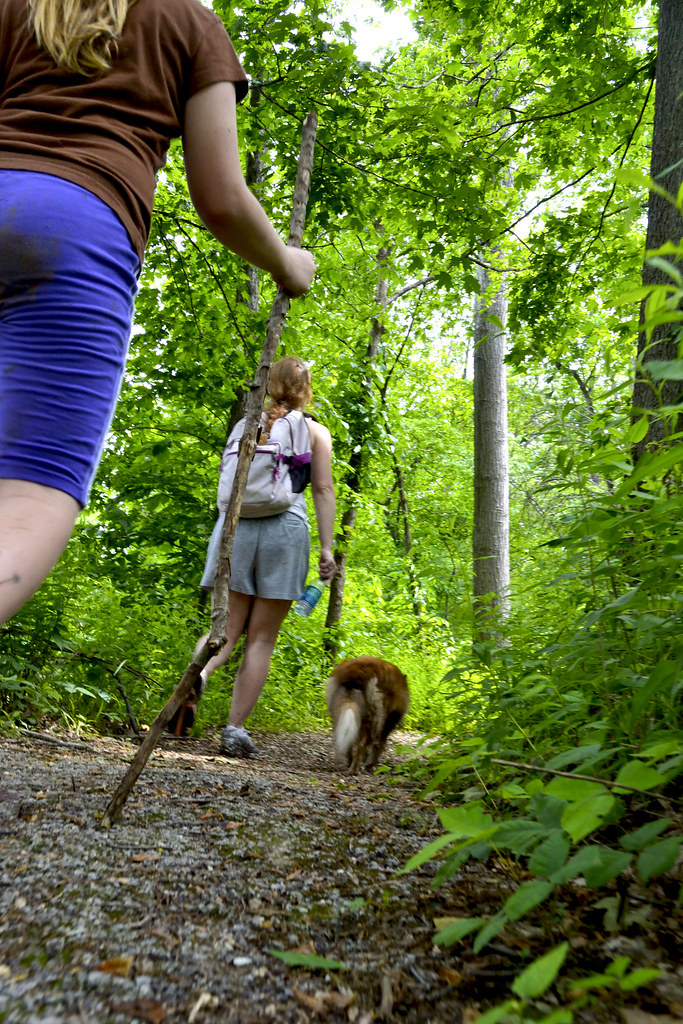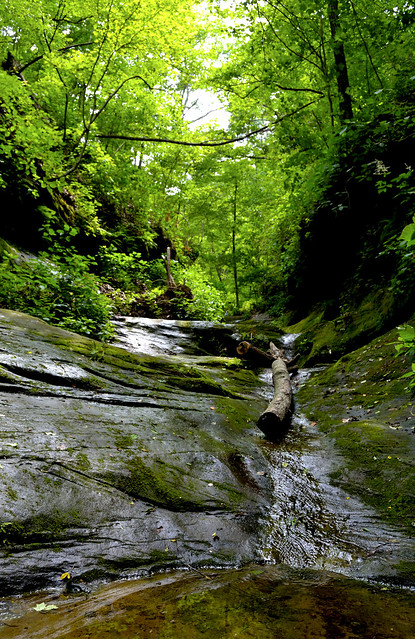Millstream Gardens is 916 acres of pure magic. The area holds wonders for nearly every outdoor enthusiast and boasts an appearance more reminiscent of the rushing rivers of Colorado than the rolling hills of Missouri. The wonder and natural beauty of Millstream Gardens and the Tiemann Shut-ins contained therein, beg you to take it slow, absorb in the natural majesty and savor every sound, especially the steady sound of rare Missouri whitewater, rushing through the smooth carved granite.
As you enter the Millstream Gardens Conservation Area, located just off of hwy 72 between Arcadia and Fredricktown, MO, you will come to a fork in the road. Turning left at the fork takes you to the "official" trail head for the
Millstream Gardens trail. From the official trail head the hike runs for about one and a half miles through the woodlands and along the
St. Francois River, connecting Millstream Gardens to the
Silver Mines Recreation Area. This trail is not a loop
trail, so once you've made the journey to the Silver Mines, you'll be heading on back on the same trail, making the trip a three mile
trek.
 |
| Local Treks: Tiemann Shut-Ins |
For hikers with small children and disabilities you will LOVE the beginning of this
trail, which hosts a half to three quarters of a mile of
paved trail, featuring benches nearly every 100-200 feet. The paved
trail also features a
very unique low wooden bridge, which crosses a
shallow creek, zigging and zagging back and forth creating an
interesting crossing. While walking along this portion of the trail, keep a keen eye out for wild blackberries, I spotted them nearly everywhere on a summer trip to the area. At the end of the pavement you will come to a
large wooden patio, which provides a perfect vantage point to take in a
particularly beautiful section of
Tiemann Shut-Ins (pronounced Tee-Man, according to the locals we spoke with). Why is it called a shut-in? Well here's a real "Ozark" answer: The term
shut in comes from the stream or river being "shut in" or confined
within a deep channel. Forcing the
St. Francois River into this channel creates some decent rapids, and
that's why the kayaking crews LOVE this portion of the river.
 |
| Who's a happy boy? |
You'll want to spend some time here for sure.
The scenery is absolutely astounding and you may find yourself snapping far more pictures than you ever imagined right here at this spot. It is also a perfect spot to dip your toes into the St. Francis River, let the kids (or yourself) splash around in the chilly water, leap from boulder to boulder, take in a quick snack or just sit, and let the sounds of the rushing water simply sooth you. On my first visit to this area, I can assure you that if my border collie, Hyatt, could speak he would have asked to never leave this spot. He splashed from rock to rock and along the sandy shores with the largest smile to ever grace a canine's face. Those of you with dogs will need to take care however, your shoes may give you ample grip on the smooth igneous rocks that form the shut-ins, but your pooch's pads and nails will not, Hyatt slipped into the water frequently as he attempted to follow the same route as myself.

Heading East from the overlook you will find the beginning of the Millstream Gardens hiking trail, which is unpaved. As you make your way down the dirt path the trail you will find signs calling attention to landmarks such as Shark's Fin rock, a large angular rock, jutting up from St. Francis River, perhaps to take a bite or two out of some of the kayakers as they shoot the rapids. Other labeled points of interest you will find in this beginning section of the trail are Pine Rock Overlook and Double Drop Rapids.
Pine Rock Overlooks provides a perfect perch to steal a few photos of the shut-ins as well. As you continue, ever eastward, you will begin to leave the Tiemann Shut-Ins area and enter the more heavily wooded portion of the trail.
 |
| I caught this bug nabbing a snack! |
After the beauty of Tiemann Shut-Ins, don't fret! There is much to be found in the forested area of the trail as well, Millstream Gardens isn't all just pink igneous rock, river and shut-ins. As you continue your hike along the trail you will find majestic oak, hickory and
shortleaf pine in the upland woods, complimented by ash, elm and maple trees near the banks of the St. Francois River. The steady sounds of the river can nearly always be heard through the hike; providing a perfect background accompaniment to the bird solos and chorus
provided by the wind blowing through the canopy. I spotted beautiful
wildflowers nearly everywhere and took a great deal of photos of each, then upon looking at them closer at home, noticed that nearly every single flower hosted some type of
stinging or biting insect. I'm certainly glad I didn't go sticking my nose straight in them! Other wildlife to keep an eye out for is white-tailed deer, turkey and... snakes during the warm months.
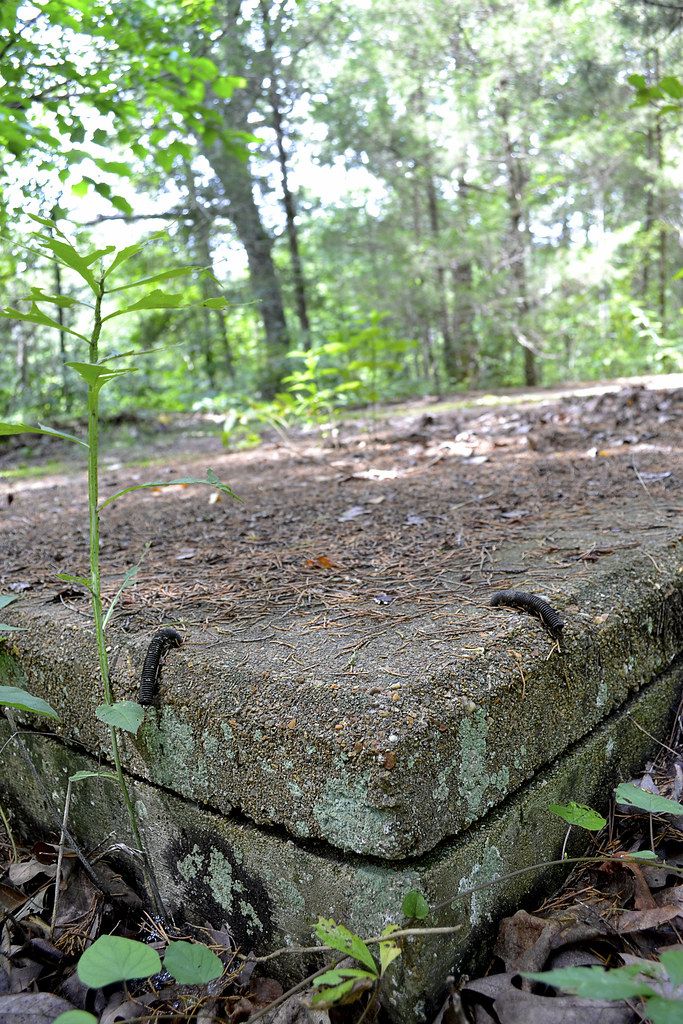
The trail through the wooded area is relatively flat, with only a few hills that reside near the midway point of the hike. In the "hilly" areas, be careful of your footing as there is loose rock and occasional water trickling through or over the trail. When you find yourself approximately three quarters of a mile east from the Tiemann Shut-In patio, you may notice a lonely concrete foundation, just before the trail begins to follow the St. Francis once again. I scoured the area for any indication as to what the foundation may have been, but only confounded myself more, spotting three cylindrical concrete forms 15-20 yards to the east of the foundation on the north side of the trail. I've continued to look online and even ask locals around the area, but have yet to discover what the foundation may have been prior. The trail may seem to "split" here at the foundation, but the path that leads west is just a slight spur that will take you to a scenic little area of the river, that features a splendid view of a tall bluff that forces the St. Francis River to flow on its northern side.
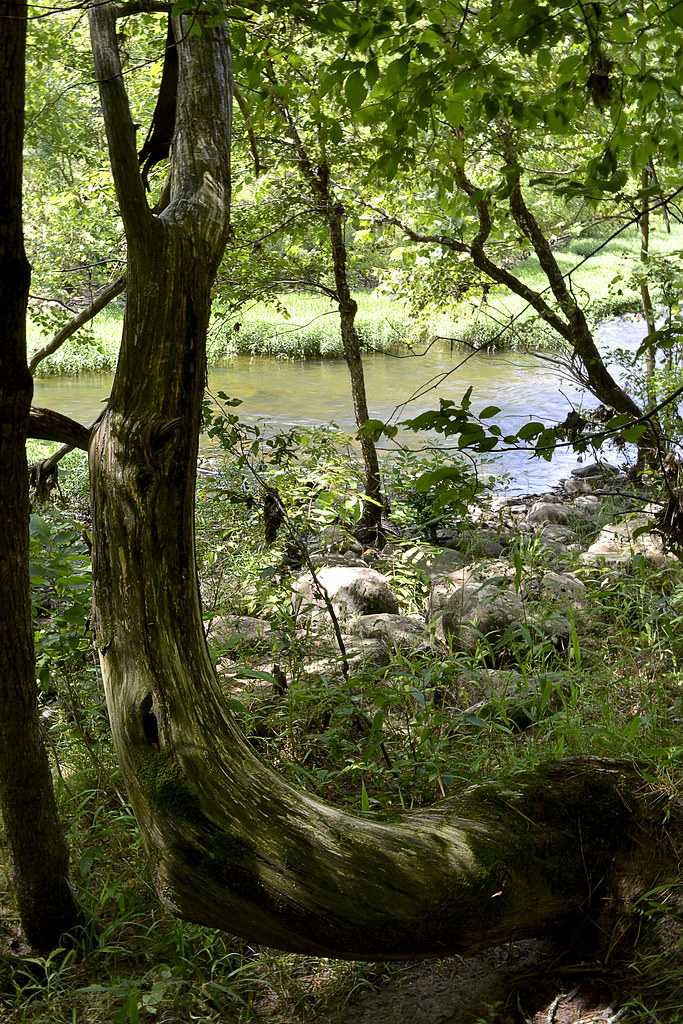
From here the trail continues eastward to the Silver Mines and Mark Twain National Forest. As the trail nears the
banks of the St. Francis be aware that you may have to make slight deviations from the path, as rising water sometimes pools in these areas or deposits branches, twigs, trees and other objects that may block your path. Don't be too wary though, you will not have to step more than a few yards from the clear trail in order to get around these small "trail-blockers". If you've brought a picnic lunch the large open field at the Silver Mines provides not only a wonderful place to take in the scenery and spot TONS of wildflowers, but also many picnic tables as well so that you may sit alongside the St. Francis River, take a reprieve and prepare for the wonderful return trip to Millstream.
In fact, upon your return to Millstream you may want to take the path that leads west from the Tiemann Shut-Ins overlook. This trail will lead you to another perfect picnic spot, this one featuring a vista over looking the St. Francis River, a picnic pavilion, and one of the most twisted pine trees I've ever seen, just check it out below!
 |
| Enjoy a picnic with a view of the river and one TWISTED pine! |
As with any trip into the woods there are ticks in this area, so you may want to brush up on
what keeps them at bay and how to remove one should it embed. And of course if you're taking children along, you may want to check out some tips on
how to take a GREAT Day Hike. Thanks for reading, be sure to leave a comment down below or check us out on
facebook!
More Information:
Mill Streams Garden Conservation Area on mdconline
Millstream Gardens Area Map
My Flickr Gallery of Images
Local Treks on facebook
White Water and Rock Hounding: Silver Mines Recreational Area
Tiny. Tenacious. Terrible. Ticks. - How to keep those bloodsuckers at bay!
How To Take A GREAT Day Hike

